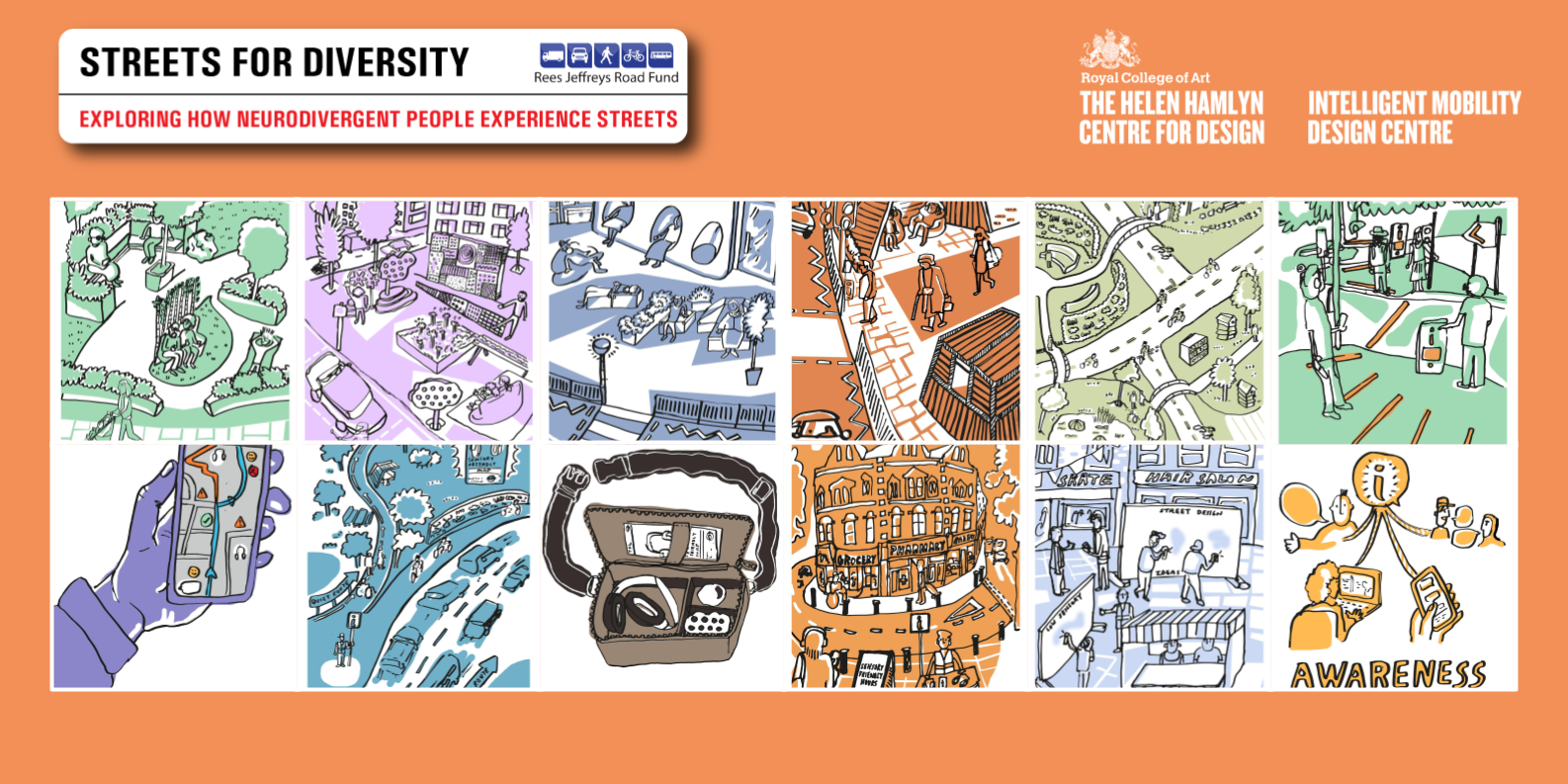

The report, written by the Royal College of Art and funded by the Rees Jefferys Road Fund, explains that neurodivergent people need green spaces on our streets because they are more open, cooler, less polluted and less crowded and they help to reduce noise and smells from traffic.
Join other savvy professionals just like you at CIHT. We are committed to fulfilling your professional development needs throughout your career
The recently published ‘Streets for Diversity’ report by the Royal College of Art (RCA) acknowledged that there is very little knowledge on how neurodivergent people experience streets.
To remedy this, the project invited neurodivergent citizens, researchers, champions and transport experts to participate in a range of co-design activities. These included ‘walk and talks,’ which allowed participants to travel around in urban areas and share their reflections on their experiences in real time. The ‘walk and talks’ were supplemented by online surveys, interviews, and a co-creation workshop, which together explored the challenges and opportunities found in our urban streets.
This research enabled the RCA to identify 14 key insights into how neurodivergent people experience and think of streets, including that green and blue spaces are found to be relaxing, replenishing places for people to walk through or sit in.

Green and Blue Infrastructure (GBI) encompasses natural and semi-natural features, interventions, and structures that provide functions and benefits for an area.
The “green” component refers to a wide range of green features including planters, street trees, green roofs, green walls, pocket parks and parklets.
The “blue” component includes rivers, canals, ponds, rain gardens, swales, filter strips, which are all integrated into the management train of Sustainable Drainage Systems (SuDS).
In a CIHT report published in February this year, ‘Green and Blue Infrastructure – A Transport Sector Perspective’ CIHT highlighted the importance of GBI for:
The same benefits have also been reported in the Streets for Diversity report, with participants providing feedback that green and blue spaces are more open, cooler, less polluted and less crowded and they help to reduce noise and smells from traffic.
One participant in the report explained why separating the road from the pavement with planters is beneficial to them:
[it] takes the stress away from walking next to the road. My kids don’t stay on the pavement very well and that separation makes it a much safer experience for ASD [autism spectrum disorder] kids
The Streets for Diversity project used the insights of the participants to develop 12 design opportunities which are important when designing or adapting a street with neurodivergent people in mind.
In terms of GBI this included design opportunities such as:
Another design opportunity developed by the Streets for Diversity project was:
CIHT recently profiled navigation tools that support disability groups when we heard from Dr Stephen R. Pearson, CEO of Sm@rt Technology (CIHT 2023 Technology and Innovation award winners). Steve presented at our CIHT Masterclass – The latest technology for smart mobility on 'Smart Thinking to create Smart Solutions for Mobility'.
Technologies such as those developed by Sm@rt Technology minimise the movement or effort needed to operate pedestrian signals, by linking pedestrian crossing signals to an app on a user’s phone, or a button connected to their wheelchair/mobility scooter/walking aid.
>>> Read our report on Green and Blue Infrastructure here
>>> CIHT members can watch our CIHT Masterclass – The latest technology for smart mobility here
>>> Register your interest in CIHT 2024 Awards here
Would you like to be involved with CIHT’s current policy project ‘Designing transport and improving the public realm for people with disabilities’? Email technical@ciht.org.uk for more information.
For any press enquires please contact communications@ciht.org.uk
For any technical enquiries please contact technical@ciht.org.uk
Join other savvy professionals just like you at CIHT. We are committed to fulfilling your professional development needs throughout your career
{{item.AuthorName}} {{item.AuthorName}} says on {{item.DateFormattedString}}: